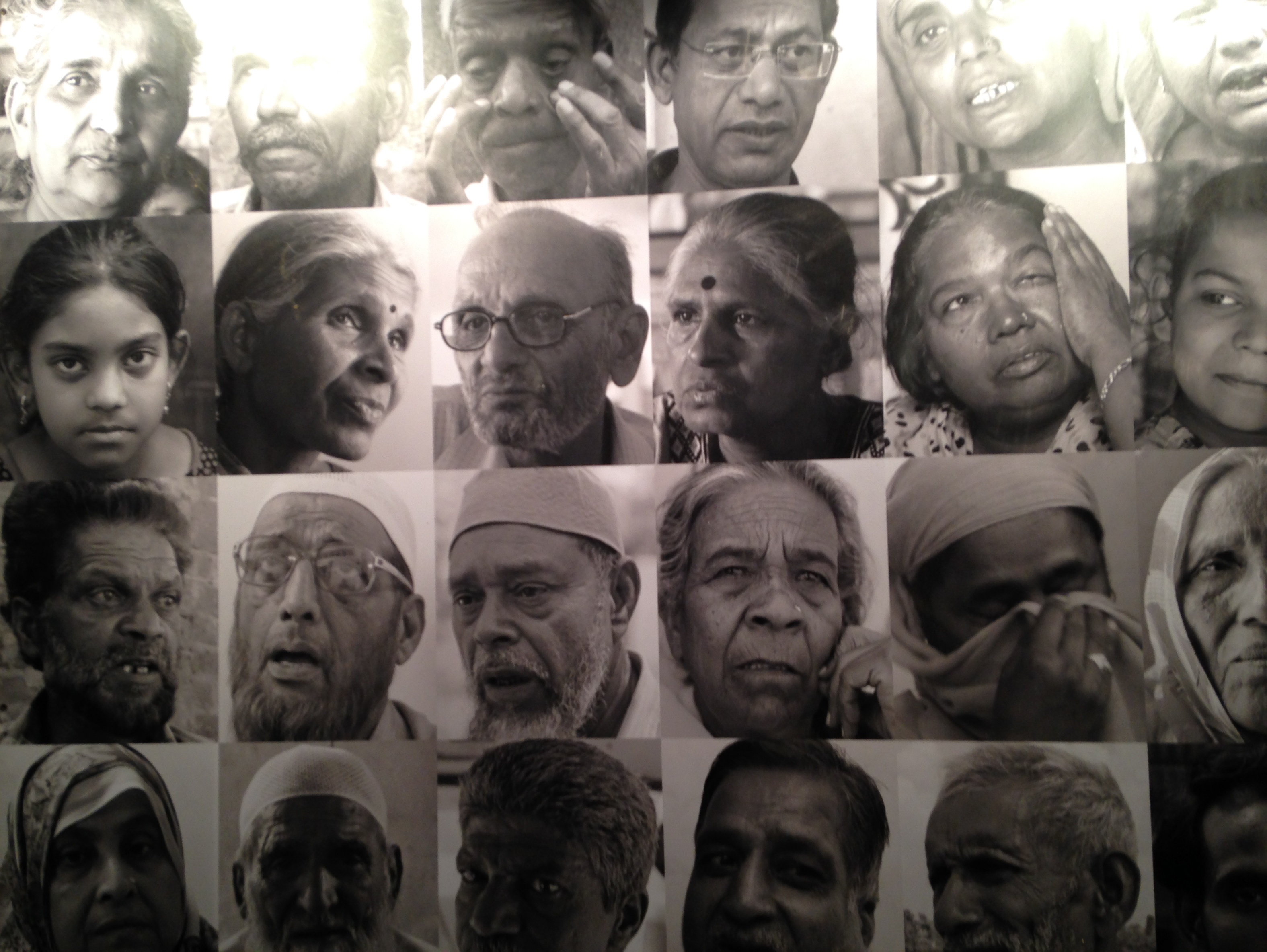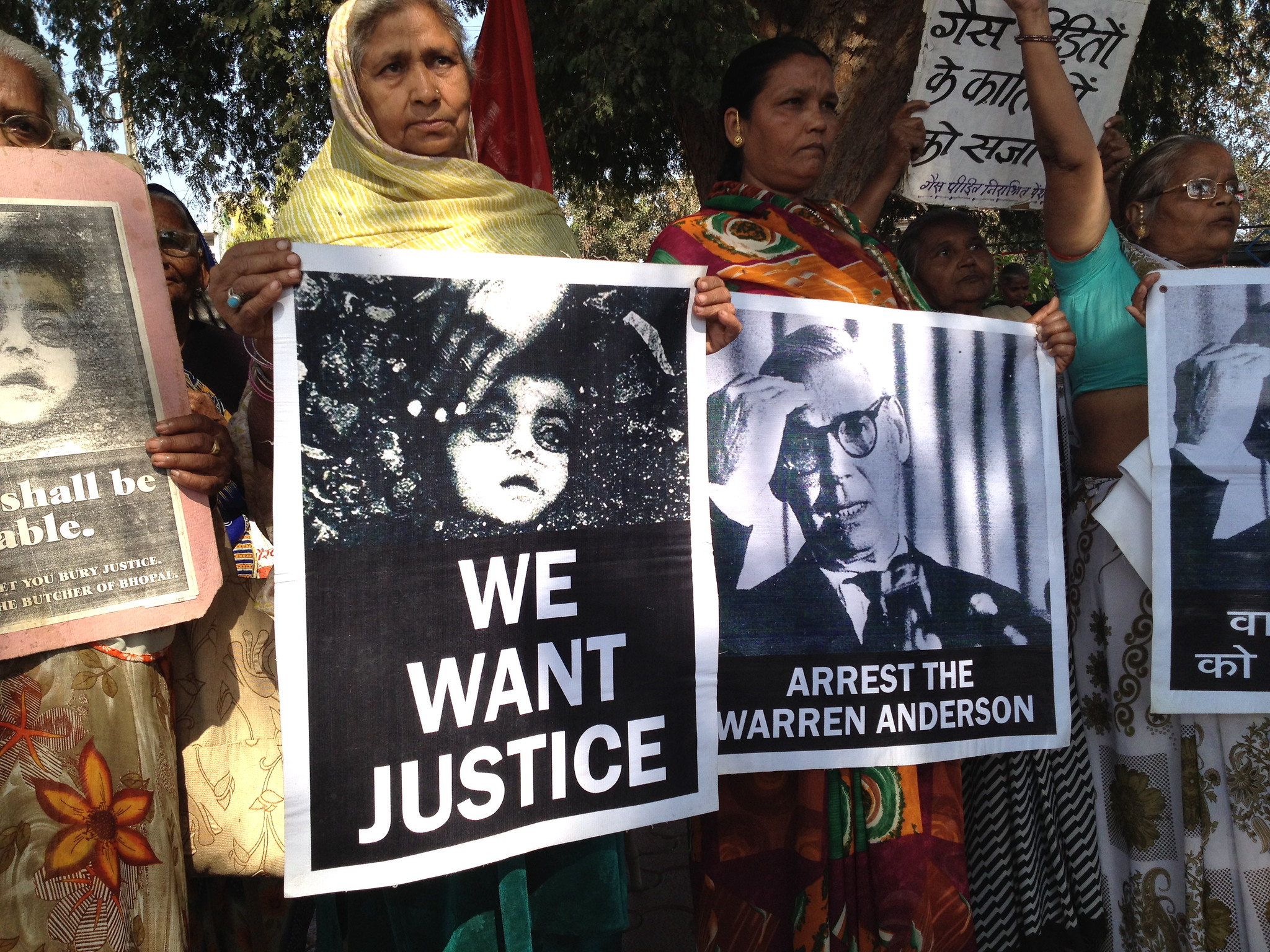It was dark in Bhopal on the night of December 2, 1984 when poisonous gas escaped from the Union Carbide factory and rolled through neighbourhoods, killing anywhere between 25,000-50,000 people. It was dark seven nights later when I walked the lanes of death – there were rumours of another leak, the few Bhopal disaster survivors had locked their shanties and fled, there were no streetlights.
Thirty years later, it is still dark in the capital of India’s Madhya Pradesh state – dark for the thousands of survivors who lost their eyesight, got a pittance in compensation or not even that, and lost their ability to earn a livelihood. It is dark for the people still dying because the poisonous gas – left in the abandoned factory – has leached into the soil and the groundwater. It is dark because nobody else cares.
The Bhopal disaster has spawned many media reports, books and movies. It led to the strengthening of India’s environment protection laws, to endless debates on corporate liability and the lack of a law of torts, to ambulance-chasing lawyers and cases in US and Indian courts.
None of this ameliorated the plight of victims to the extent that they can call closure – even today – on the worst calamity that could have befallen them. Their lives continue to be an endless round of clinics, hospitals, medicines – they have to pay for almost all the treatment. Hardly anyone among them has any money left, but still they have to find it somehow.
Mumtaz was 25 the night methyl isocyanate gas – an intermediate chemical for Sevin, a pesticide being produced by Union Carbide – rolled into her home. At that time, she was one of five daughters of a relatively prosperous trader and farmer. Today, she says, “I don’t even know how we lost the 80 acres of land my father used to own. We kept selling it in parcels to pay for our medical treatment. My father was blinded by the gas, he could no longer work. When the land was gone, we sold our jewellery. After more than 20 years, we got a compensation of Rs.190,000 (US$3,066) for the entire family. That same year, I took my father to a speciality eye hospital in Chennai. It did not help, but it cost us Rs.200,000 (US$3,227). We cannot go out during the day, our eyes are still so affected that they water constantly.”
Mumtaz continues to live in Berasia Road, now well-lit by sodium vapour streetlights, installed with money received by the municipality to help gas leak victims. The skeleton of the abandoned factory shows up stark. So does a nearby signboard – Widows’ Colony.
Apart from the streetlights, the state government set up two hospitals and 15 day care centres for the victims. Most of the time, the centres work, and so do a couple more set up by NGOs. In fact, for most survivors, the sewing work they do at these centres is their only source of income. It is another story at the hospitals.
From day one, Union Carbide officials have refused to provide details about the toxicity of methyl isocyanate – pleading patent rights and trade secrets. For 30 years, doctors have treated not the cause but the symptoms – eye drops and cough syrups. A German doctor who landed in Bhopal with crates of sodium thiosulphate – the known antidote to cyanide poisoning – was thrown out of the country. The Indian Council of Medical Research (ICMR) closed its investigations into the toxic effects of methyl isocyanate and declared that all the research findings would remain secret.
Everything was done in the name of gas victims’ rights, with the government appointing itself in loco parentis and then reaching an out-of-court settlement with Union Carbide for a total compensation of US$470 million. Divide that by the number of victims, and the figure is lower than for each seal killed in the Exxon Valdez disaster, far lower than the US$26 billion paid by British Petroleum for the Gulf of Mexico oil spill. Union Carbide has since been bought over by Dow Chemicals, and the new owner refuses to accept legal responsibility.
Officials of Union Carbide India Limited – the local subsidiary – were charged with culpable homicide. After 26 years, a court reduced the charges to causing death by negligence and ordered seven officials to go to jail for two years. The victims say if you go by government records of those killed, it translates to 33 minutes in prison for each victim – one of the many bits of macabre arithmetic with which they while away their time. The officials appealed against the order – so they are not in jail. The trial continues.

Another fallout of the legal process is that no one has been able to clean up the factory and remove the poisonous chemicals still stored there. They are wanted in evidence. In actuality, the drums have rusted, the poisons are leaching into the soil and the groundwater – still maiming, blinding and killing the victims who are too poor to move elsewhere. A group of boys was playing football on a plot where the soil was known to be highly poisonous. When this was pointed out to them, they replied, “Where else can we go?”
The plight of Bhopal gas leak victims would have been far worse without the dedication of a few voluntary activists who have now spent their lives trying to make a change – though they have been repeatedly beaten by policemen and jailed for their troubles.
But apart from them and the victims themselves, nobody seems to care. Half of India’s 1.25 billion people were born after the gas leak took place – and every straw poll shows most of the people below 30 do not even know what happened, not in Bhopal and definitely not in the rest of India. They want to get on with their lives, they want to forget what happened. But as a journalist who had put together a book on the 25th anniversary of the gas leak said recently, “A people without their collective memory of disasters are more likely to see a repeat of such disasters.”

